Foods High in Alpha Linolenic Acid (ALA)
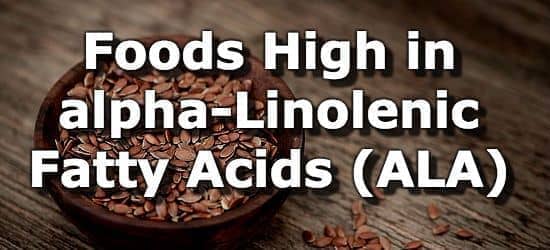
Alpha-Linolenic Acid (ALA) is an essential omega-3 fatty acid that must be obtained via foods. Alpha-linolenic acid is associated with a reduced risk of heart disease (1,2). ALAs can also help relieve inflammation associated with inflammatory bowel disease. (3)
ALA may also provide a wide range of health benefits including reduced cancer risk and regulation of the intestinal flora. (4)
ALA is also important for vegetarians, vegans, or people who do not eat fish or seafood. This is because the body can convert ALAs into the essential long-chain omega-3 fatty acids Docosahexaenoic acid (DHA) and Eicosapentaenoic Acid (EPA). (1) Both DHA and EPA are primarily found in fish and seafood and play a vital role in the brain and eyes. (5) For people who do not consume fish, ALAs are essential to increase levels of DHA and EPA.
The current daily target for ALAs is set at 1.6g per day. (6) This is set as an adequate intake (AI) since there is not enough evidence to establish a recommended dietary allowance (RDA).
How well ALA converts into EPA and DHA is a matter of debate, with some estimating a conversation rate of 3-6%. (7) Pregnant women should consume 0.2-0.3g of DHA a day (8), so you can impute an intake of 5 - 10g of ALAs to meet the daily requirement for DHAs during pregnancy and lactation.
Foods high in ALAs include flaxseeds, chia seeds, walnuts, canola oil, edamame, navy beans, cherimoya, avocados, roasted chicken, and zucchini.
In today's modern diet, most people eat a much higher proportion of Omega 6s than Omega 3s, leading some to look for foods with a good Omega 3 to Omega 6 ratio. For this reason, the amount of omega 3s per omega 6 fat is listed for each food.
Below is a list of top 10 foods highest in ALAs. For more foods high in ALAs see the complete ranking of over 200 foods high in ALA fats. Note: The list of 200+ foods contains many fried foods which are likely fried using soybean or canola oil, and this is why they have a high quantity of ALAs. That said, deep-fried foods are high in saturated-fats, calories, and not part of a healthy diet. For this reason, the top 10 list below excludes these foods.
List of Foods High in ALAs
-
4g Omega 3 per 1g Omega 6
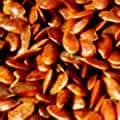 1. Flax Seeds + Add
1. Flax Seeds + Add
ALA
per OzALA
per 100gALA
per 200 Calories6.48g
(405% AI)22.81g
(1426% AI)8.54g
(534% AI) -
3g Omega 3 per 1g Omega 6
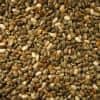 2. Chia Seeds + Add
2. Chia Seeds + Add
ALA
per oz(~2 Tblsp)ALA
per 100gALA
per 200 Calories5.06g
(316% AI)17.83g
(1114% AI)7.34g
(459% AI) -
1g Omega 3 per 4g Omega 6
 3. Walnuts + Add
3. Walnuts + Add
ALA
per OzALA
per 100gALA
per 200 Calories2.58g
(161% AI)9.08g
(568% AI)2.78g
(174% AI)More Nuts High in ALAs
- 0.76g (48% AI) per oz of dried black walnuts
- 0.06g (4% AI) per cup of dry roasted pistachios
- 0.03g (2% AI) per oz of dried pine nuts
-
1g Omega 3 per 2g Omega 6
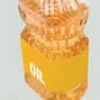 4. Canola Oil + Add
4. Canola Oil + Add
ALA
per TblspALA
per 100gALA
per 200 Calories1.28g
(80% AI)9.14g
(571% AI)2.07g
(129% AI)More Vegetable Oils High in ALA
- 7.26g (454% AI) in 1 tbsp of flaxseed oil
- 0.92g (58% AI) in 1 tbsp of soybean oil
Note:While olive oil is a heart healthy fat, it does not provide a significant amount of ALAs.
-
1g Omega 3 per 5g Omega 6
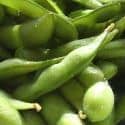 5. Edamame (Green Soybeans) + Add
5. Edamame (Green Soybeans) + Add
ALA
per CupALA
per 100gALA
per 200 Calories0.55g
(35% AI)0.36g
(22% AI)0.59g
(37% AI) -
1g Omega 3 per 1g Omega 6
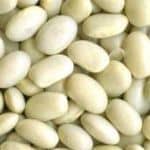 6. Navy Beans + Add
6. Navy Beans + Add
ALA
per CupALA
per 100gALA
per 200 Calories0.32g
(20% AI)0.18g
(11% AI)0.25g
(16% AI) -
6g Omega 3 per 1g Omega 6
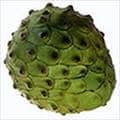 7. Cherimoya (Custard Apple) + Add
7. Cherimoya (Custard Apple) + Add
ALA
per Cup PiecesALA
per 100gALA
per 200 Calories0.25g
(16% AI)0.16g
(10% AI)0.42g
(27% AI)More tropical fruits high in ALA
- 0.14g (9% AI) per cup chopped of mamey sapote
- 0.13g (8% AI) per cup of sliced jackfruit
-
1g Omega 3 per 13g Omega 6
8. Avocados + Add
ALA
per AvocadoALA
per 100gALA
per 200 Calories0.22g
(14% AI)0.11g
(7% AI)0.14g
(9% AI) -
1g Omega 3 per 21g Omega 6
 9. Roasted Chicken (Fatty) + Add
9. Roasted Chicken (Fatty) + Add
ALA
per Chicken ThighALA
per 100gALA
per 200 Calories0.16g
(10% AI)0.12g
(8% AI)0.1g
(6% AI)Note: Fatty cuts of chicken are not considered heart-healthy and have a poor omega 3 to omega 6 ratio. However, chicken and other meats do contain some ALAs.Ground turkey with 15% fat provides 0.182g (11% AI) per 3oz serving.
-
2g Omega 3 per 1g Omega 6
 10. Zucchini + Add
10. Zucchini + Add
ALA
per Cup SlicedALA
per 100gALA
per 200 Calories0.08g
(5% AI)0.06g
(4% AI)0.72g
(45% AI)
Printable One Page Sheet
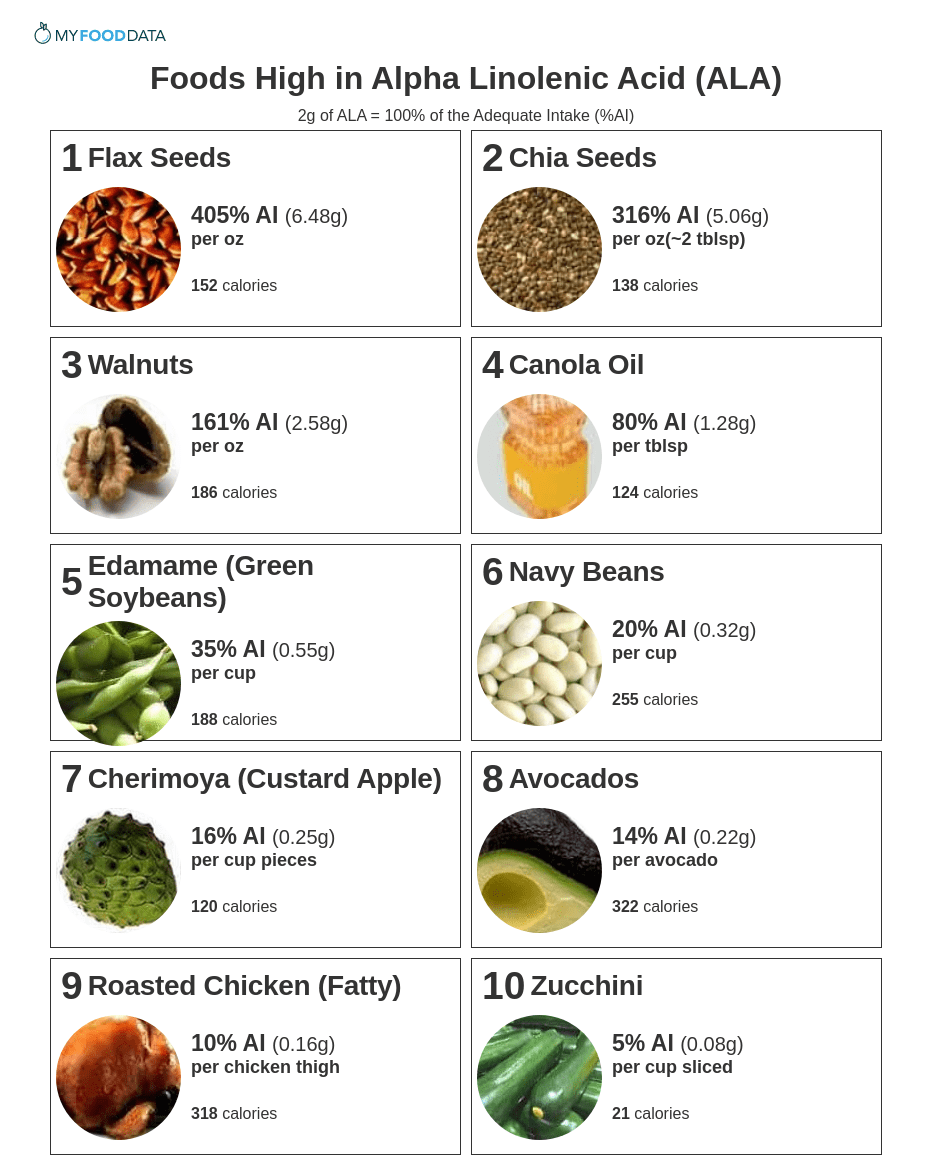
How much Alpha-Linolenic Acid (ALA) do you need everyday?
Below are the daily adequate intakes (%AI) established for alpha-linolenic acids (ALA). Adequate intakes are used when there is not enough data to formulate a recommended dietary allowance (RDA). The adequate intake of ALAs ranges between 0.5g - 1.6g per day for most people. (11)
| Life Stage | RDA |
|---|---|
| Infants | |
| 0-6 months old | 0.5g |
| 7-12 months old | 0.5g |
| Children | |
| 1-3 years old | 0.7g |
| 4-8 years old | 0.9g |
| Males | |
| 9-13 years old | 1.2g |
| 14+ years old | 1.6g |
| Females | |
| 9-13 years old | 1g |
| 14+ years old | 1.1g |
| Pregnancy | |
| 14-50 years old | 1.4g |
| Lactation | |
| 14-50 years old | 1.3g |
Health Benefits of Alpha-Linolenic Acids
- Reduced risk of cardiovascular disease - Studies suggest that patients who consume more ALAs may reduce the incidence of coronary disease and lower mortality in those with coronary disease. (1,2,9,10)
- Alleviation of Inflammation - A diet where 6% of energy intake comes from ALAs reduces markers of inflammation. (11)
- Reduced risk of dementia - In a study involving 7,500 people in Japan, blood levels of ALAs were found to be inversely proportional to risk of dementia. (12) A similar result was also found in the Korean population. (13)
- Possible Protection Against Alzheimer's Disease - ALAs are associated with improvements in the blood brain barrier. (14) In addition to this ALAs help to manufacture DHAs which are concentrated in the brain. The effect of the blood brain barrier is a new theory in Alzheimer's disease currently under study. (14)
- Reduction of triglycerides and blood pressure - While associated primarily with all omega 3 fats (DHA and EPA), ALAs are also associated with a reduction of blood cholesterol (triglycerides). (15,16,17)
From the Nutrient Ranking Tool
Use the ranking tool links below to select foods and create your own food list to share or print.
- Foods High in Alpha Linolenic Acid (ALA)
- Foods Low in Alpha Linolenic Acid (ALA)
- Vegetarian Foods High in Alpha Linolenic Acid (ALA)
- Dairy High in Alpha Linolenic Acid (ALA)
- Fast Foods High in Alpha Linolenic Acid (ALA)
View more nutrients with the nutrient ranking tool, or see ratios with the nutrient ratio tool.
Related
Data Sources and References
- Lanzmann-Petithory D. [Alpha-linolenic acid and cardiovascular diseases] J Nutr Health Aging. 2001;5(3):179-83. 11458289
- Abdelhamid AS, Brown TJ, Brainard JS, Biswas P, Thorpe GC, Moore HJ, Deane KH, AlAbdulghafoor FK, Summerbell CD, Worthington HV, Song F, Hooper L. α-Linolenic acid and risk of cardiovascular disease: a systematic review and meta-analysis Cochrane Database Syst Rev. 2018 Nov 30;11(11):CD003177. doi: 10.1002/14651858.CD003177.pub4. 30521670
- Camuesco D, Comalada M, Concha A, Nieto A, Sierra S, Xaus J, Zarzuelo A, Gálvez J. α-Linolenic acid (ALA) is an anti-inflammatory agent in inflammatory bowel disease Clin Nutr. 2006 Jun;25(3):466-76. doi: 10.1016/j.clnu.2005.12.009. Epub 2006 May 15. 16698151
- Kim KB, Nam YA, Kim HS, Hayes AW, Lee BM. The review of alpha-linolenic acid: Sources, metabolism, and pharmacology Food Chem Toxicol. 2014 Aug;70:163-78. doi: 10.1016/j.fct.2014.05.009. Epub 2014 May 21. 24859185
- Uauy R, Mena P, Rojas C. Essential fatty acids in visual and brain development Proc Nutr Soc. 2000 Feb;59(1):3-15. doi: 10.1017/s0029665100000021. 10828169
- National Academies Press. Dietary Reference Intakes for Energy, Carbohydrate, Fiber, Fat, Fatty Acids, Cholesterol, Protein, and Amino Acids
- Broughton KS, Bayes J, Culver B. Can adults adequately convert alpha-linolenic acid (18:3n-3) to eicosapentaenoic acid (20:5n-3) and docosahexaenoic acid (22:6n-3)? Nutr Res. 2010 Oct;30(10):731-8. doi: 10.1016/j.nutres.2010.09.005. 21056289
- Hoffman DR, Boettcher JA, Diersen-Schade DA. Docosahexaenoic acid (DHA) and the developing central nervous system (CNS) - Implications for dietary recommendations Prostaglandins Leukot Essent Fatty Acids. 2009 Aug-Sep;81(2-3):151-8. doi: 10.1016/j.plefa.2009.05.003. Epub 2009 Jun 7. 19505812
- Sala-Vila A, Guasch-Ferré M, Hu FB, Sánchez-Tainta A, Bulló M, Serra-Mir M, López-Sabater C, Sorlí JV, Arós F, Fiol M, Muñoz MA, Serra-Majem L, Martínez JA, Corella D, Fitó M, Salas-Salvadó J, Martínez-González MA, Estruch R, Ros E; PREDIMED Investigators; B. Alpha-linolenic acid and coronary heart disease J Am Heart Assoc. 2016 Jan 26;5(1):e002543. doi: 10.1161/JAHA.115.002543. 26813890
- Chen LH, Hu Q, Li G, Zhang L, Qin LQ, Zuo H, Xu G. Dietary intake and biomarkers of alpha linolenic acid and risk of all cause, cardiovascular, and cancer mortality: systematic review and dose-response meta-analysis of cohort studies Front Nutr. 2021 Nov 3;8:743852. doi: 10.3389/fnut.2021.743852. eCollection 2021. 34805241
- Zhao G, Etherton TD, Martin KR, West SG, Gillies PJ, Kris-Etherton PM. Dietary alpha-linolenic acid inhibits proinflammatory cytokine production by peripheral blood mononuclear cells in hypercholesterolemic subjects J Nutr. 2004 Nov;134(11):2991-7. doi: 10.1093/jn/134.11.2991. 15514264
- Sengul Aycicek G, Kızılarslanoglu MC, Ulger Z. Serum α-linolenic and other ω-3 fatty acids, and risk of disabling dementia: Community-based nested case-control study Clin Nutr. 2017 Apr;36(2):611. doi: 10.1016/j.clnu.2017.01.016. Epub 2017 Jan 28. 28190534
- Lee AL, Park Y. Erythrocyte α-linolenic acid is associated with the risk for mild dementia in Korean elderly Ann Nutr Metab. 2013;63(1-2):88-95. doi: 10.1159/000353120. Epub 2013 Aug 14. 23949659
- Halliday MR, Rege SV, Ma Q, Zhao Z, Miller CA, Winkler EA, Zlokovic BV. How Alpha Linolenic Acid May Sustain Blood-Brain Barrier Integrity and Boost Brain Resilience against Alzheimer's Disease J Cereb Blood Flow Metab. 2016 Jan;36(1):216-27. doi: 10.1038/jcbfm.2015.44. 25757756
- McKenney JM, Sica D. Triglyceride-lowering effect of omega-3 LC-polyunsaturated fatty acids--a review Pharmacotherapy. 2007 May;27(5):715-28. doi: 10.1592/phco.27.5.715. 17461707
- Zeng FF, Sun LL, Liu YH, Xu Y, Guan K, Ling WH, Chen YM. Whole blood omega-3 fatty acid concentrations are inversely associated with blood pressure in young, healthy adults J Nutr. 2014 Aug;144(8):1240-6. doi: 10.3945/jn.114.192286. Epub 2014 Jun 25. 24966412
- Sala-Vila A, Guasch-Ferré M, Hu FB, Sánchez-Tainta A, Bulló M, Serra-Mir M, López-Sabater C, Sorlí JV, Arós F, Fiol M, Muñoz MA, Serra-Majem L, Martínez JA, Corella D, Fitó M, Salas-Salvadó J, Martínez-González MA, Estruch R, Ros E; PREDIMED Investigators; B. Impact of α-Linolenic Acid, the Vegetable ω-3 Fatty Acid, on Cardiovascular Disease and Cognition J Am Heart Assoc. 2016 Jan 26;5(1):e002543. doi: 10.1161/JAHA.115.002543. 26813890
Simplify Nutrition Tracking with MyFoodData!
Speedy Tools and Detailed Data FREEEasily analyze your meals to find the best foods for your goals.
✅ Use our recipe nutrition calculator and nutrition comparison tool.
✅ Access expert nutrition data tools and in-depth articles.
✅ Log foods and organize your recipes with a free account.


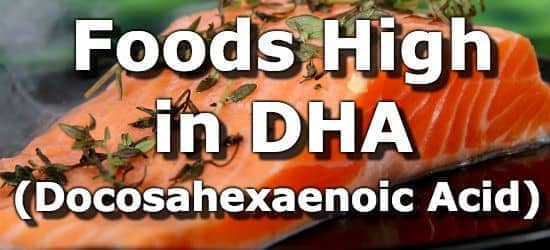 Next ➞
Next ➞
